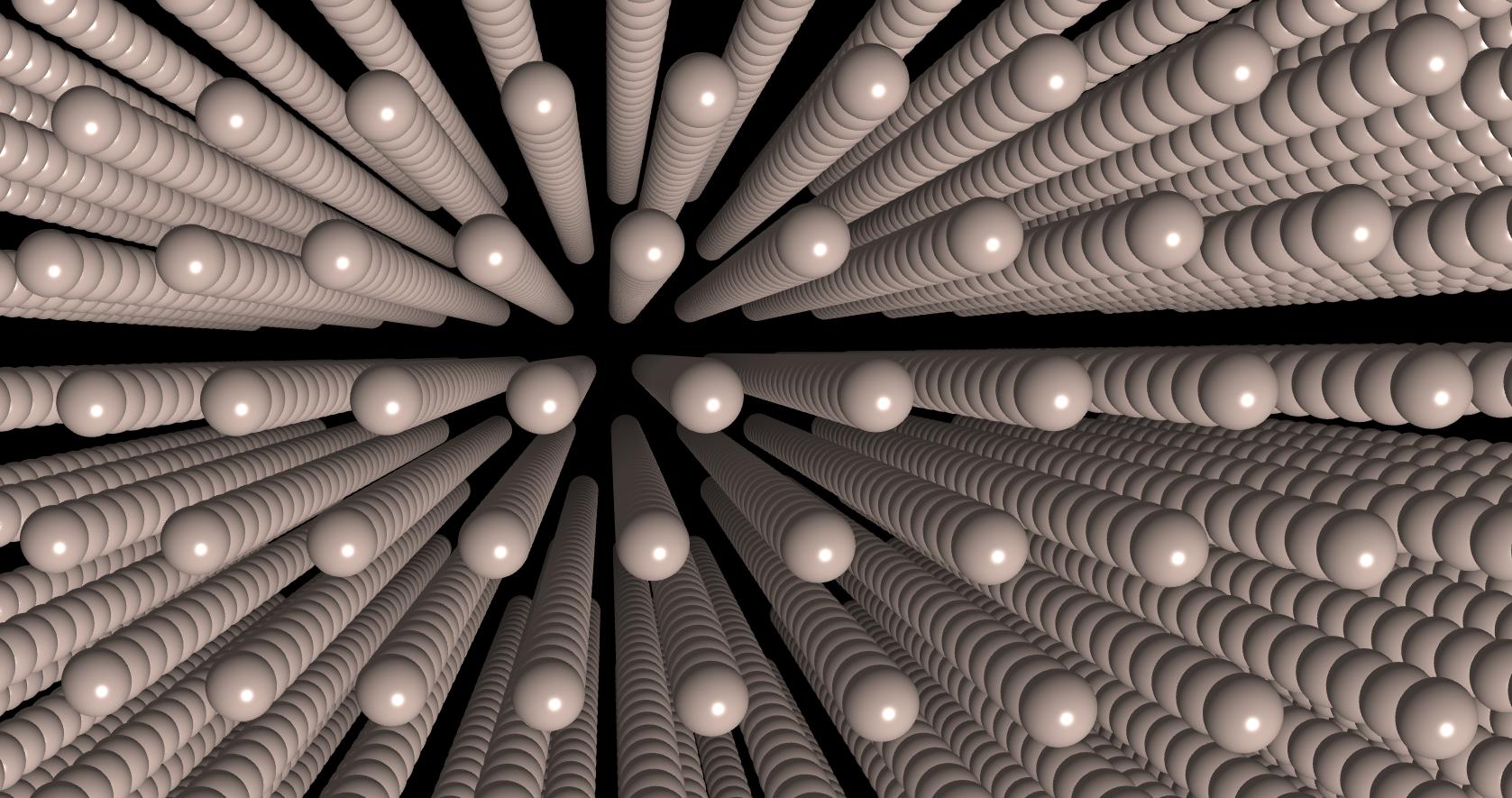
Group leader: Dr. Emilia Olsson
Materials Theory and Modeling
News & Highlights
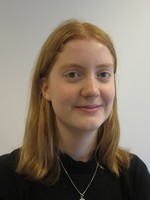
Successful BSc thesis defence from Tera Molenaar
Tera Molenaar has successfully finished her BSc thesis on strain engineering of 2D materials as part of her Physics and Astronomy studies at UvA/VU. During her time in the group, Tera used density functional theory simulations to assess the effect of strain on the electronic and potassium storage properties of three important 2D materials – graphene, silicene, and phosphorene. During the summer, we are very happy that Tera will continue her work on strain engineering, deepening the investigation to defect tuning. Her thesis can be found at https://scripties.uba.uva.nl/search?id=record_56519

Keynote talk KNCV CTC Symposium
Emilia Olsson was invited to give the keynote talk for the 2025 KNCV Computational and Theoretical Chemistry (CTC) symposium at the University of Twente on the 14th April 2025. Her talk focused on atomic scale materials design and its applications beyond academia for next-generation technological solutions.

Molecular Dynamics for Material Science
On the 7th April 2025, Emilia Olsson gave an invited talk at the Lorentz Centre in Leiden as part of the Molecular Dynamics for Material Science workshop. Her talk focused on the group’s work on interface dynamics, and chronicled our integrated materials design framework combining density functional theory and molecular dynamics simulations for functional materials design with a strong application focus.
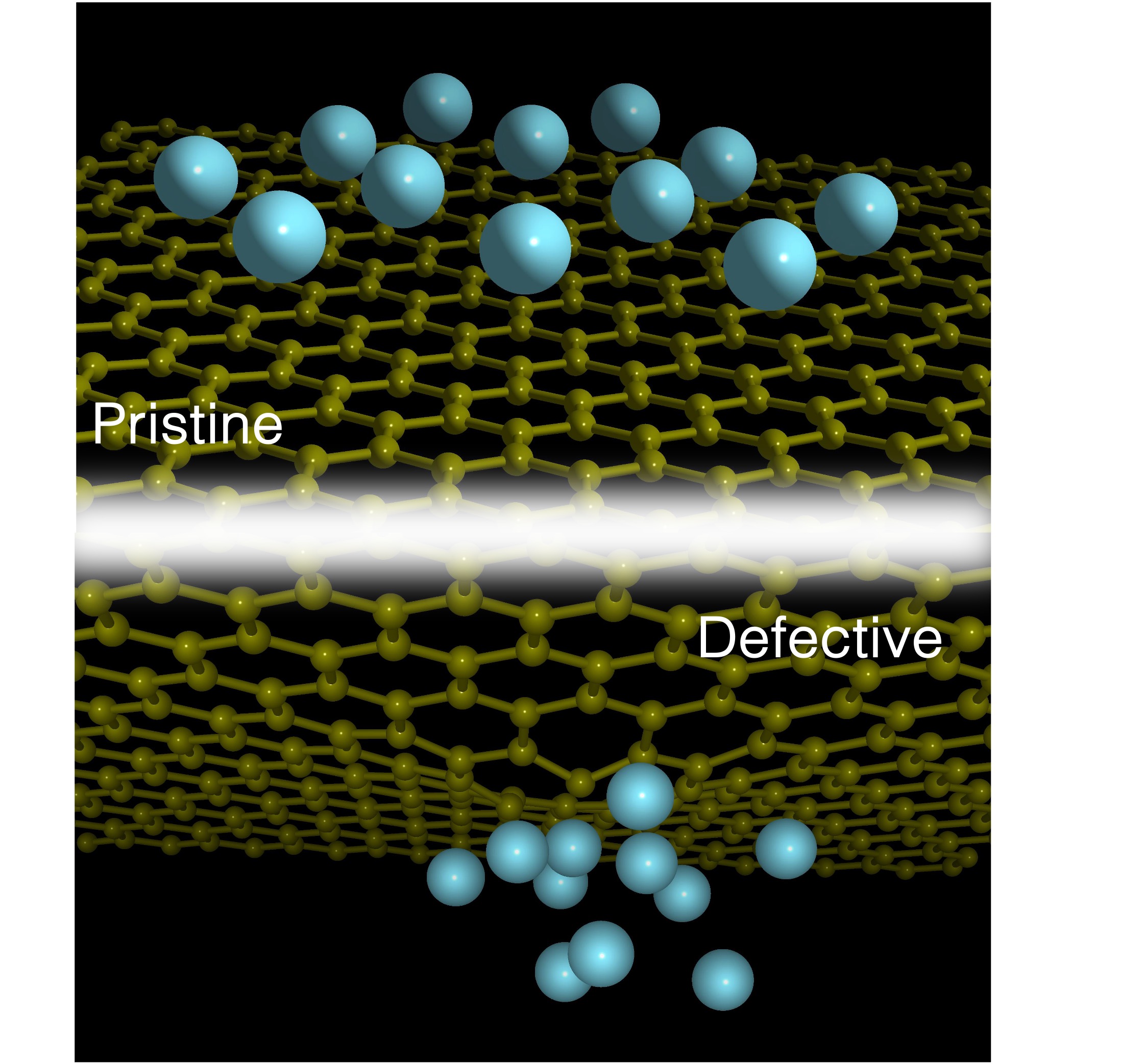
New publication in Sustainable Energy&Fuels
The group’s latest work on atomic scale materials defect engineering was published as part of the Emerging Investigators Series in Sustainable Energy & Fuels. In this work, we investigate the role of vacancy defects on dendrite formation in graphene-based alkali metal ion batteries as part of our ongoing work on sustainable materials design. The article can be found here.
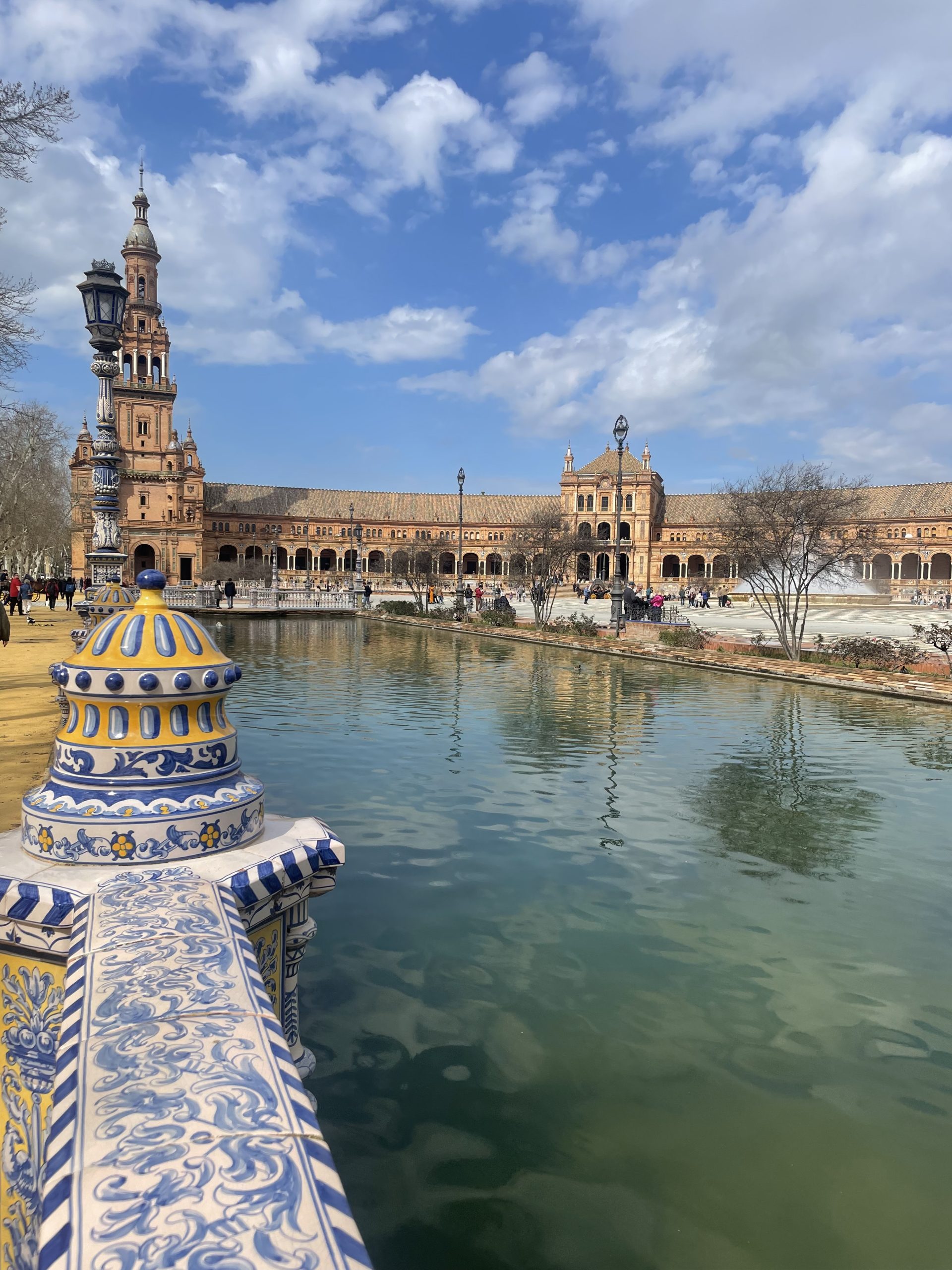
MATSUS Spring 2025
Emilia Olsson gave an invited talk on interface modelling of complex electrochemical systems, coupling to experimental in operando techniques at the Materials for Sustainability conference in Sevilla Spain on March 5th 2025. Atomic scale modelling plays an important part in linking experimentally observed behaviour to atomic scale mechanisms, allowing for intelligent materials design. In her talk, she presented the Materials Theory and Modelling group’s modelling toolbox, and discussed the latest results from the group on tackling these challenges.
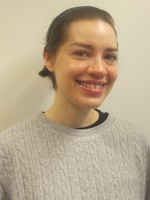
Gabrielli E Silva de Almeida joins the MTM group
On the 15th January 2025, Dr Gabrielli E Silva de Almeida joined the MTM group as a postdoc in a joint appointment with the groups of Dr Sonja Pullen and Dr Bettina Baumgartner at the van’t Hoff Institute for Molecular Sciences at UvA. Gabi will work on the MMD TechHub funded project Optimizing Porous Thin Films for Enhanced Charge Transfer in Solar Energy Conversion Applications, combining experimental and computational work in an integrated materials design loop for sustainable technologies. Prior to joining ARCNL, Gabi studied for her PhD in Sustainable Chemistry at Institut Laue Langevin in Grenoble (France) and the Instituto de Tecnología Química (ITQ) Universidad Politecnica de Valencia (Spain) and finished her thesis on Understanding the microscopic mechanism for the industrially relevant ethylene/ethane separation by silver-containing molecular sieves in late 2024.
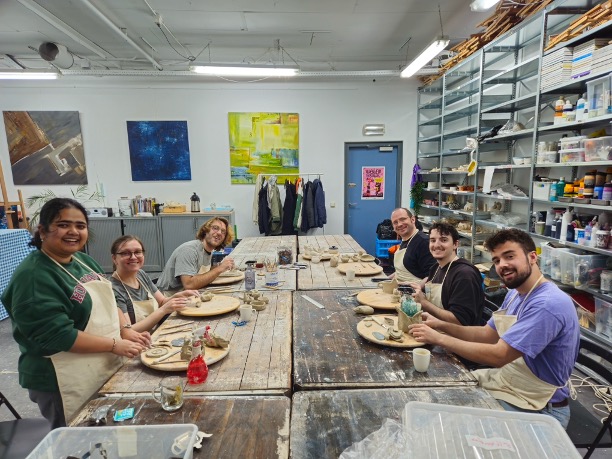
End of year group outing
2024 has seen the group double in size (with three new PhD students), and the graduation of four BSc students. To celebrate the end of the year, the Materials Theory and Modelling group left their computers behind and got creative with clay. After a few hours of (more or less successful) creativity with a new medium, we left our creations including cups, pots, coasters, doors, and paper weights to dry whilst we went for a celebratory festive meal.
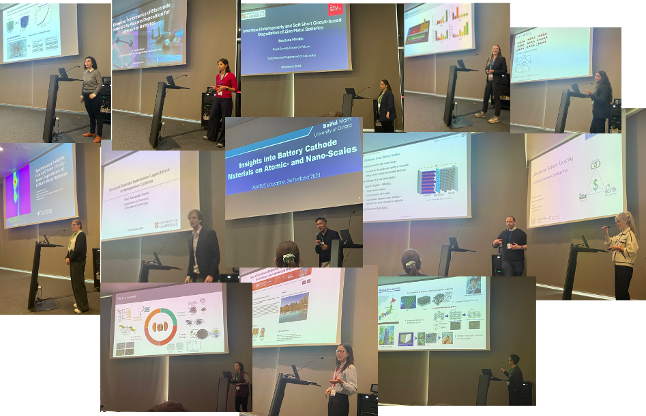
Materials for Sustainable Development Conference 2024
November 12-15 2024, the Materials for Sustainable Development conference was organised in Lausanne, Switzerland. Emilia Olsson arranged together with Heather Au from Imperial College London, United Kingdom, a two-day symposium on materials design across the scales bringing together international computational and experimental experts. Speakers included Saiful Islam from the University of Oxford, Carla de Tomas from Imperial College London, Wei Yu from Tohuku University, Laura Lander from Kings College London, and Alexander Forse University of Cambridge. The full list of talks and abstracts can be found here.

New letter published in PCCP
Our latest work on initial interface formation is now published in PCCP. In a collaboration with the Bliem group at ARCNL and the Meyer group at Leiden University, we investigated the interaction of silicon with ruthenium (0001) surface, suggesting a computational approach for screening oxidation resistance of surface coatings.
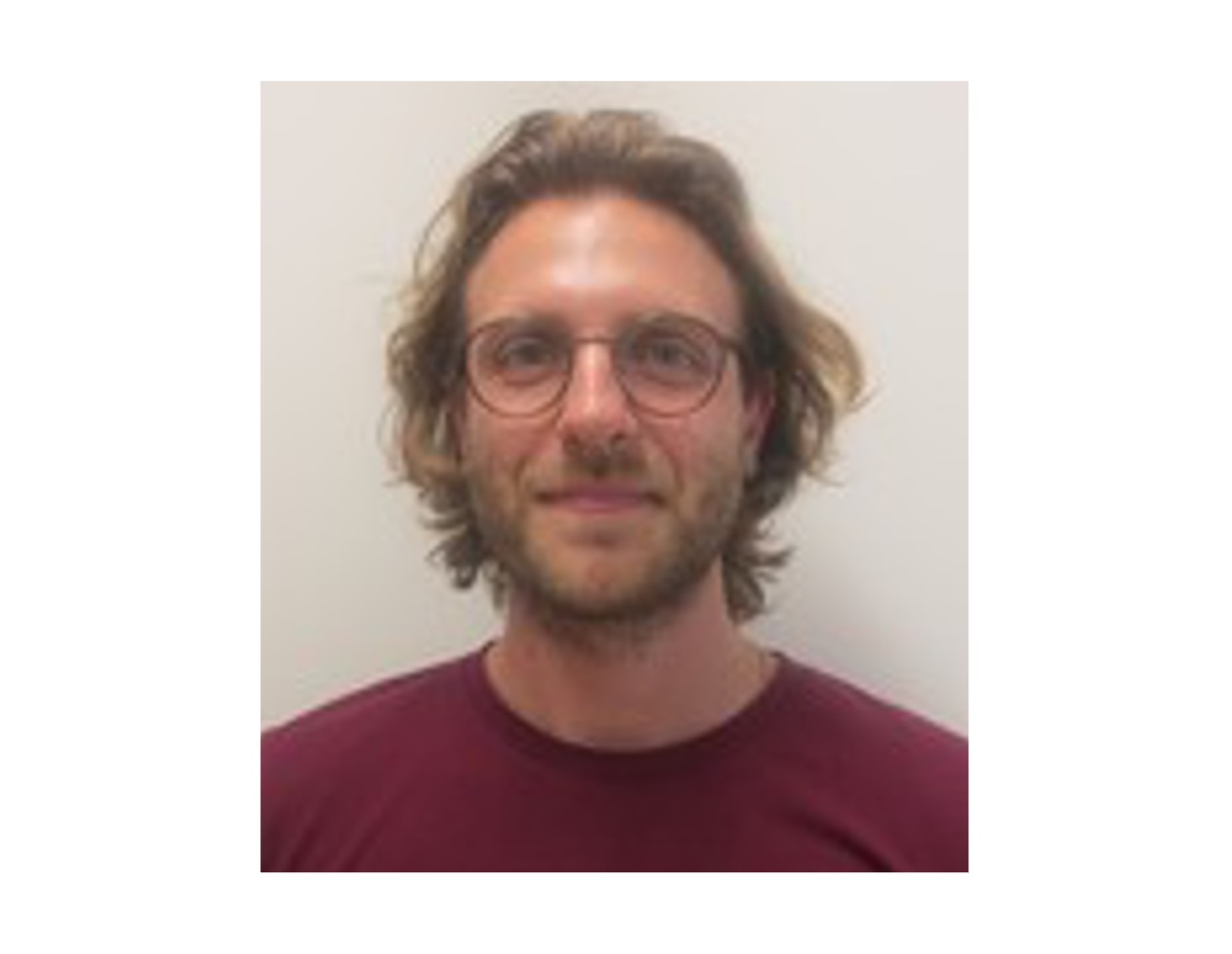
Giona Mainardis joins the MTM group
On Friday 1st November 2024, Giona Mainardis joined the Materials Theory and Modelling group as a PhD student. Giona will work on our TKI funded project ARISTOTLE in collaboration with researchers at ASML and SKF, with the aim to develop a workflow for modelling realistic tribological interfaces. Prior to joining ARCNL, Giona completed a Master of Science in Physical Chemistry at the University of Copenhagen, Denmark, and a Bachelor of Science in Chemistry at the University of Turin, Italy.

New paper published in ACS Applied Energy Materials
Our group’s latest investigation into the role of disorder in functional materials has been published in ACS Applied Energy Materials. Together with collaborators Marta Sevilla and Noel Díez at the Instituto de Ciencia y Tecnología del Carbono (INCAR), Spain, we employed our strain-based computational methodology to unravel the atomic scale origin of the distinct S-doping behaviours in carbons. Through a combined computational and experimental materials design framework, we could show how nanostructuring of these materials can be achieved, forming the foundation of future research to come. The full paper can be read here.

Thomas Nieboer joins the MTM group
On Monday 23rd September 2024, Thomas Nieboer joined the Materials Theory and Modelling group as a PhD student. Thomas will explore how we can tune the properties of two dimensional borides, carbides, and nitrides by using atomic scale materials design and interface engineering. Prior to joining ARCNL, Thomas completed his BSc and MSc in Physics at Rijksuniversiteit Groningen.
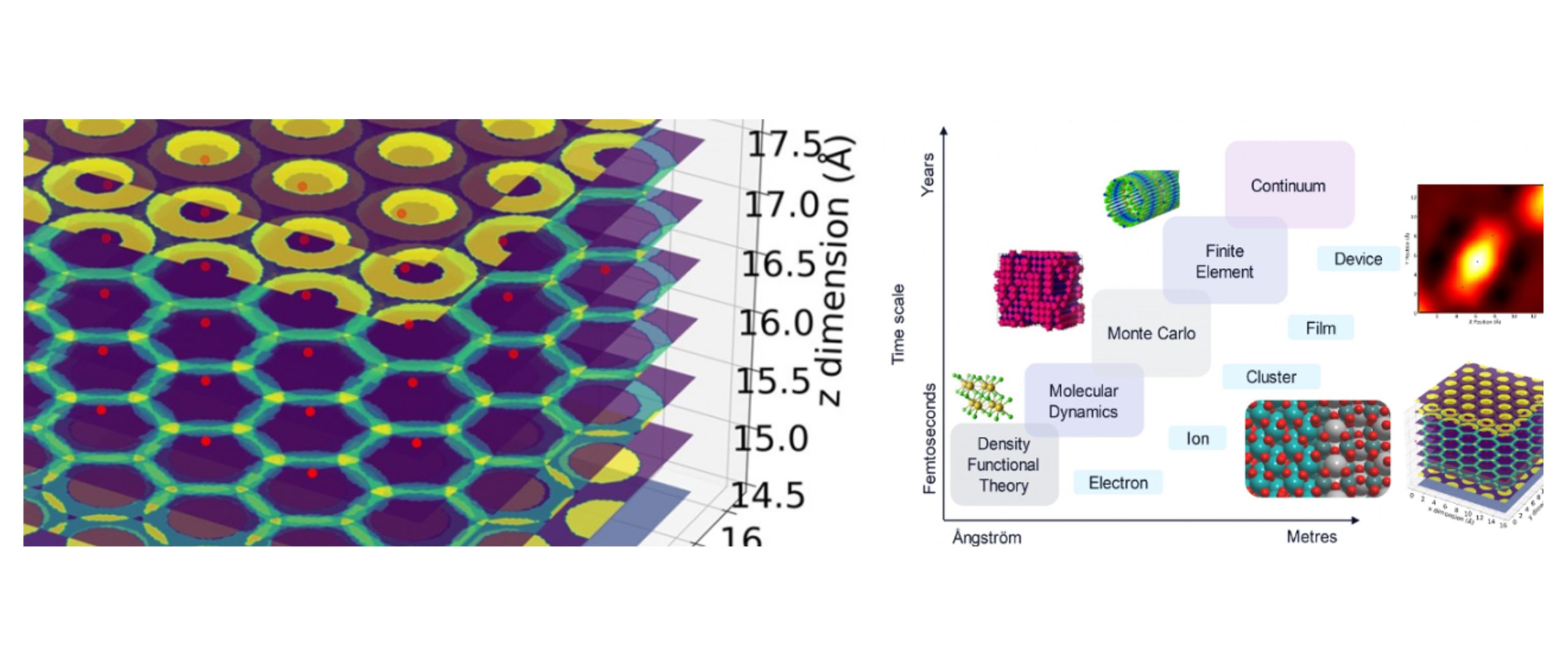
TKI funding for Materials Theory and Modelling Group
Emilia Olsson has been awarded a TKI grant as part of Holland High Tech’s Semiconductor Manufacturing Equipment programme, together with project partners ASML and SKF. A third of the yearly global energy loss has been attributed to friction-induced processes, making the search and development of highly efficient and durable tribological coatings imperative. Significant research effort has been devoted to developing high performing coating materials with excellent friction properties, but the role of the interface between the tribological coating and its substrate is poorly understood. Gaining an atomic scale understanding of these interfaces will allow for the origin of weaknesses to be identified, and mitigation methods to be developed. ARISTOTLE (A Realistic Description of Tribological Interfaces) will provide funding for a 4-year PhD position, and allow us to tackle exactly these challenges.

Robin Delhomme joins the MTM group
On Monday 9th September 2024, Robin Delhomme joined the Materials Theory and Modelling group as a PhD student. Robin will work on our TKI funded project “COATINGS” to investigate the effect of disorder and heteroatom incorporation in oxide coatings within the group’s application specific materials design theme. Prior to joining ARCNL, Robin completed his MSci in Physics at University College London, and a data analysis internship at BMW.
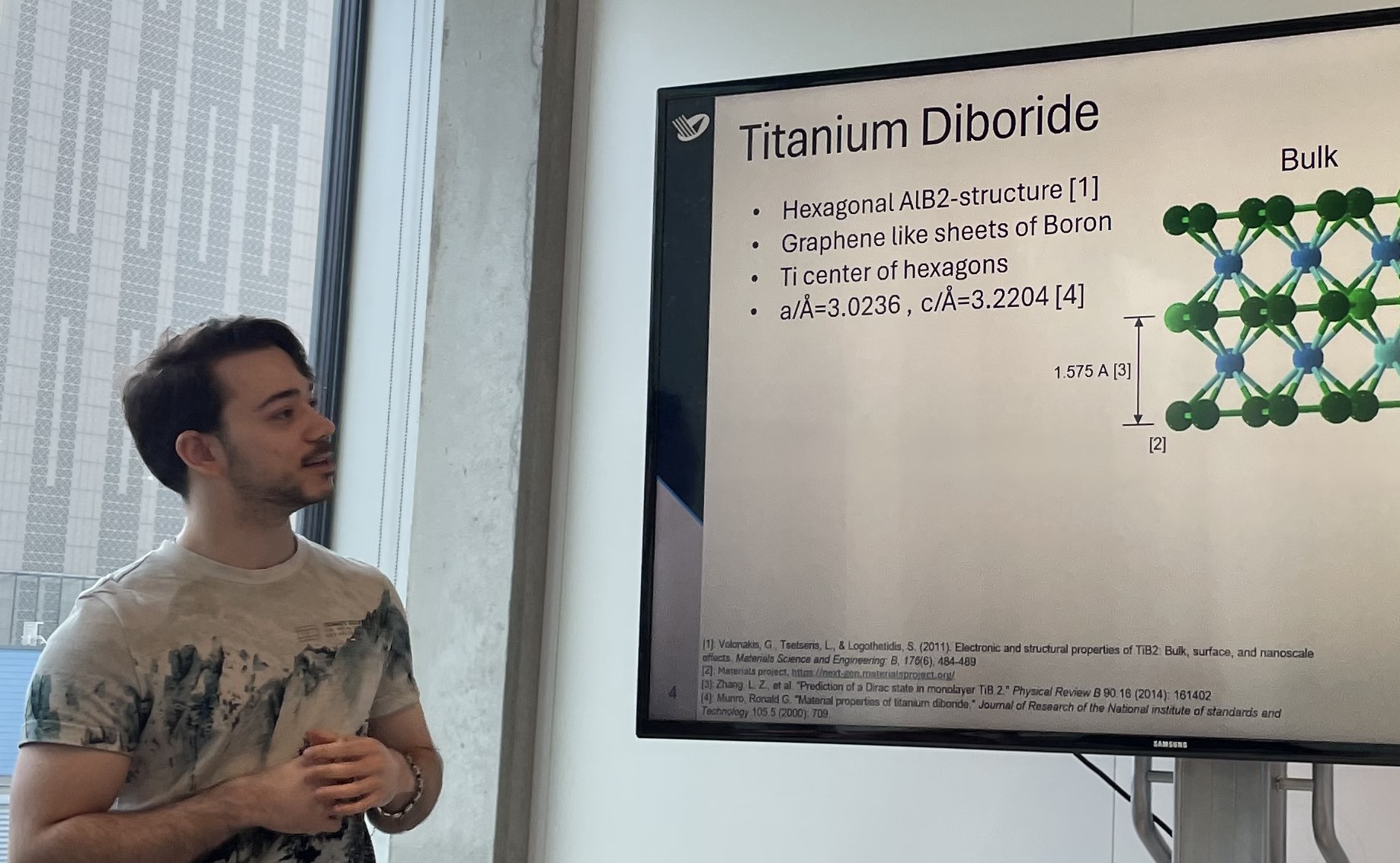
Successful BSc thesis defence from Christian Mirone
Christian Mirone has successfully defended his BSc thesis and obtained his BSc degree. During his time in the group he studied a new class of materials based on 2D borides as candidates for friction and wear resistant coating materials. Christian’s DFT simulations gave important insight into layer thickness, surface stability, and defect formation, leaving a thesis from which work for several scientific questions can be built upon. We wish Christian all the best in his future endeavors!
You can read Christian’s thesis here.

MMD TechHub grant
Dr Emilia Olsson has together with Dr Sonja Pullen and Dr Bettina Baumgartner from the Van’t Hoff Institute for Molecular Sciences received a Molecular and Materials Design (MMD) Technology Hub grant for their project entitled Optimizing Porous Thin Films for Enhanced Charge Transfer in Solar Energy Conversion Applications. With this collaborative grant, we will build an integrated computational and synthetic design framework for thin film metal organic frameworks for use in solar energy conversion applications. As part of the project, an 18-month postdoc position is available (see more details here).
To see the other awarded projects and for more information, please see the Institute of Physics website.
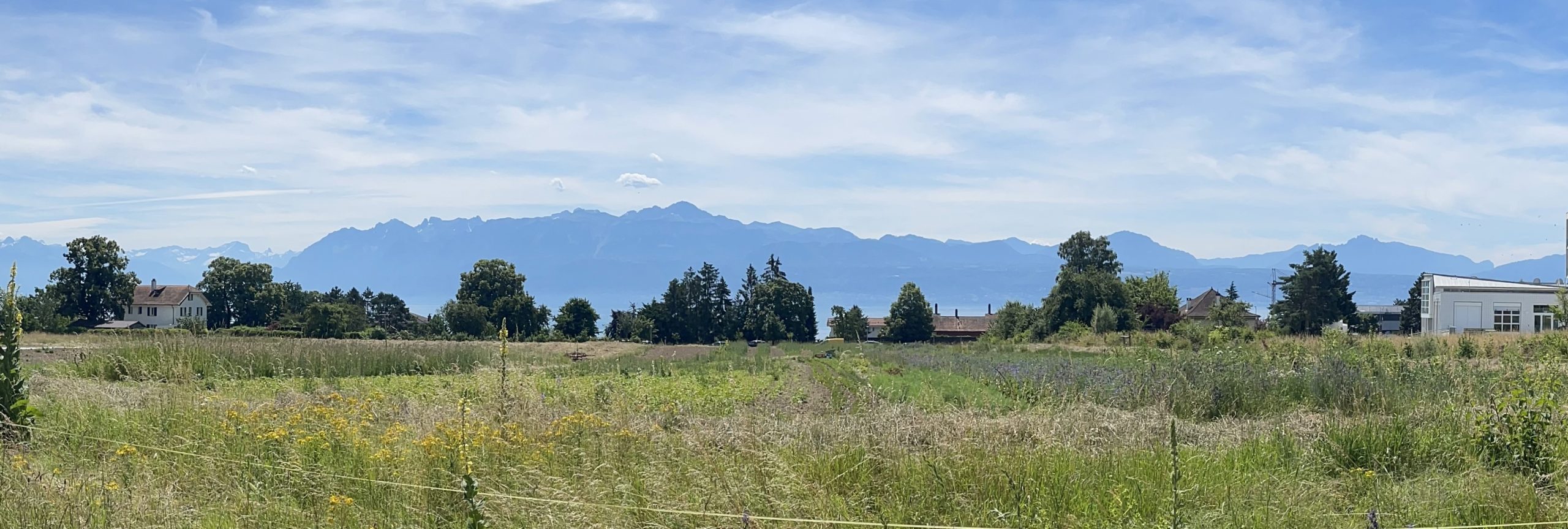
CECAM Workshop 2024
Emilia Olsson gave an invited talk titled “Towards heterogeneous interface modelling” at Centre Européen de Calcul Atomique et Moléculaire (CECAM) in Lausanne, Switzerland as part of the Electrochemical Interfaces in Energy Storage: Advances in Simulations, Methods and Models Flagship workshop.
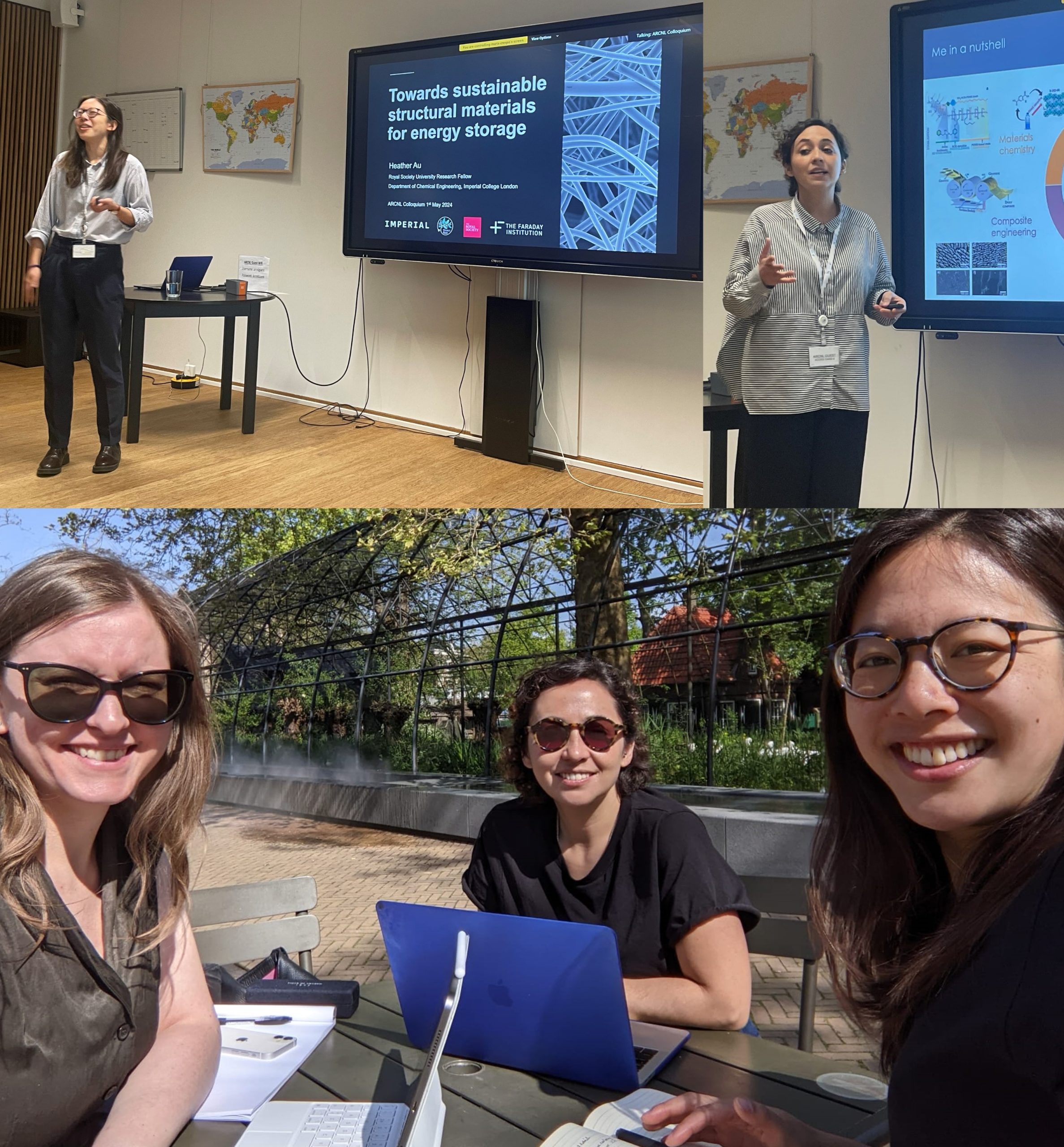
Special Symposium on Sustainable Materials Research
Wednesday 1st May 2024 we organised a special ARCNL colloquium on sustainable materials research, with invited speakers from the United Kingdom. Dr Heather Au from Imperial College London gave a talk on Carbon Fibre Hosts for Sustainable Lithium-Sulfur Battery Electrodes, and Dr Maria Crespo from Queen Mary University of London presented her work on sodium-ion batteries and taking her research from materials development to operando characterisation. The day was then wrapped with research discussions, exploring how we can combine materials synthesis, device application, and materials modelling in an intelligent materials design framework for making technologies more sustainable from the atomic scale up.

Start of two new BSc students
On the 2nd of April 2024 we welcomed two new BSc students from University of Amsterdam to the Materials Theory and Modelling group. Christian Mirone and Gijs Koper are both investigating the materials properties of complex borides, going from 2D to 3D.

Successful BSc thesis defence from Wessel Beumer
Wessel Beumer has successfully defended his BSc thesis where he developed a new method to generate interface structures. Wessel joined the group in January 2024 and spent 10 weeks developing a Rust based Python library named Crystacean based on the Restricted Random Structure Search interface modelling methodology developed by the group. We wish Wessel all the best in his future endeavors and look forward to the future work coming out of this thesis together!
You can read Wessel’s thesis here.

New publication in Journal of Physical Chemistry Letters
Together with collaborators from the University of Leiden we have elucidated the multifaceted role of hydrogen in amorphous silicon nitride in our latest publication “From Jekyll to Hyde and Beyond: Hydrogen’s Multifaceted Role in Passivation, H-Induced Breakdown, and Charging of Amorphous Silicon Nitride“. In semiconductor devices, hydrogen is typically considered as a panacea for defects, neutralizing dangling bonds and consequently purging the related defect states from the band gap. In amorphous silicon nitride, a material that is critical for electronic, optical, and mechanical applications hydrogen passivates both silicon and nitrogen dangling bonds. However, as we show in our paper, the story does not end there. By employing density functional theory calculations, we could unveil hydrogen’s multifaceted role in a-Si3N4. On the “Jekyll” side, hydrogen atoms are indeed restorative, healing coordination defects in a-Si3N4. However, “Hyde” emerges as hydrogen induces Si–N bond breaking, particularly in strained regions of the amorphous network. Beyond these dual roles, our study revealed an intricate balance between hydrogen defect centers and intrinsic charge traps that already exist in pristine a-Si3N4: the excess charges provided by the H atoms result in charging of the a-Si3N4 dielectric layer.
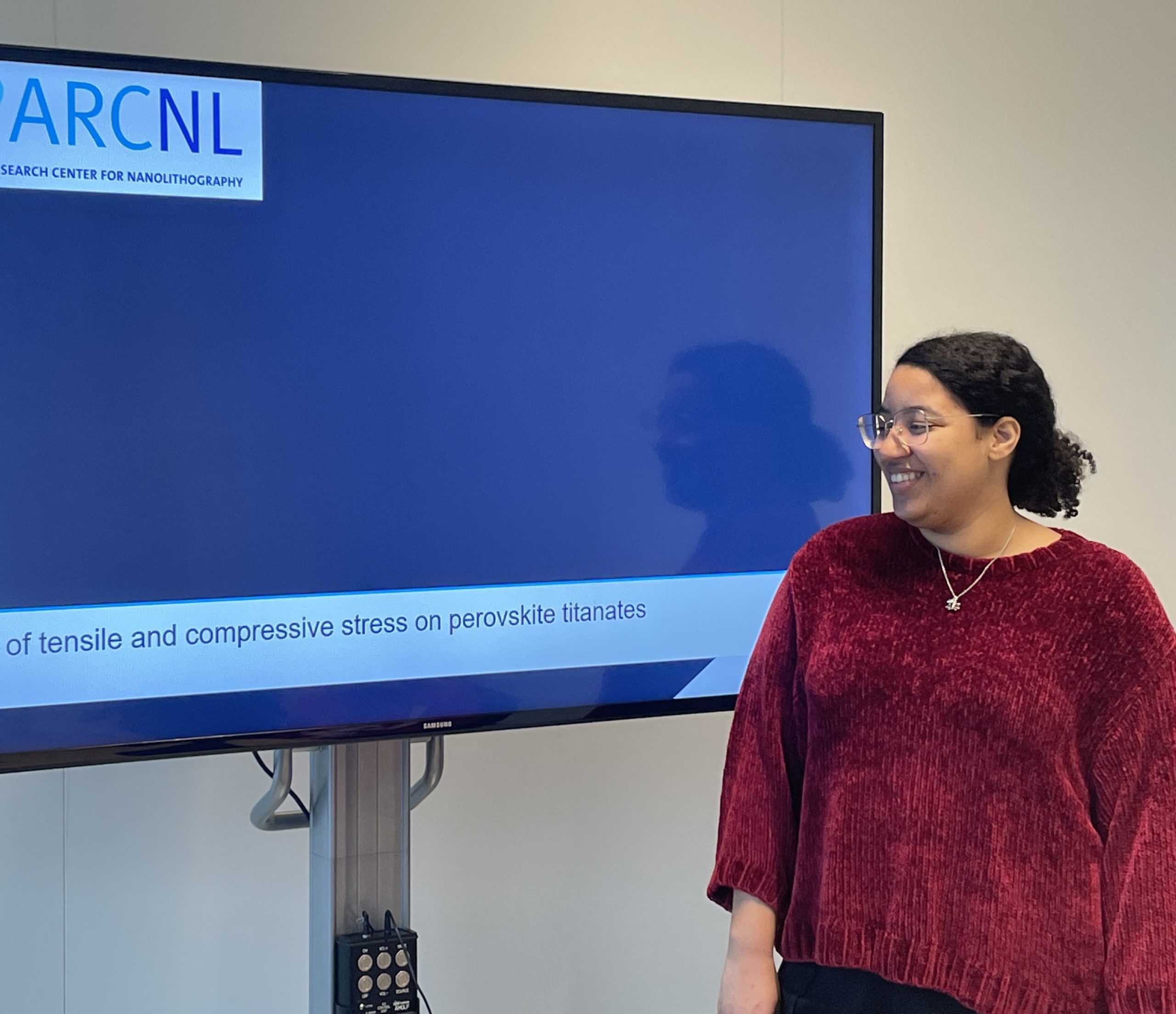
Successful BSc Thesis Defense from Amy Oppong!
Amy Oppong has successfully defended her BSc thesis on the effects of tensile and compressive strain in complex oxide materials. Amy joined the group in November 2023 as the final part of her BSc programme at UvA/VU, and has spent 10 weeks investigating how we can use stress and strain to alter ionic conductivity in complex oxides. We wish Amy all the best in her future endeavors!
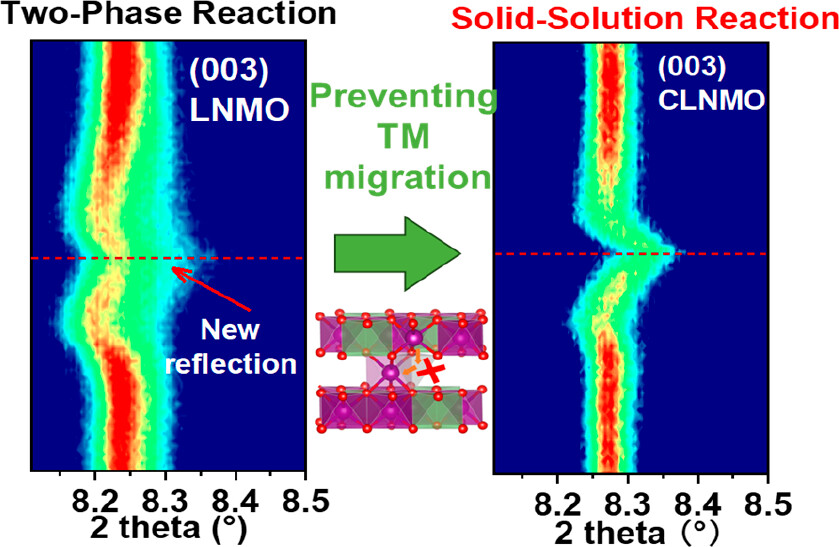
New publication out in ACS Energy Letters
The latest addition to our ongoing collaboration with the group of Professor Guo at the University of Wollongong, Australia, has been published in ACS Energy Letters. In this letter, we showed the effect of Cr doping in cobalt-free layered lithium oxides. Through a combined computational and experimental investigation, we could show the role of transition metals in Li migration mechanism manipulation, paving the way for future nano-engineered layered oxide compounds with application specific properties.
Our earlier papers on cobalt-free layered oxides can be read here and here.

MATSUS Fall 2023
Group leader Emilia Olsson gave an invited talk on her work on functional complex carbon materials at the Materials for Sustainable Development conference in Torremolinos (Spain) on the 20th October 2023.
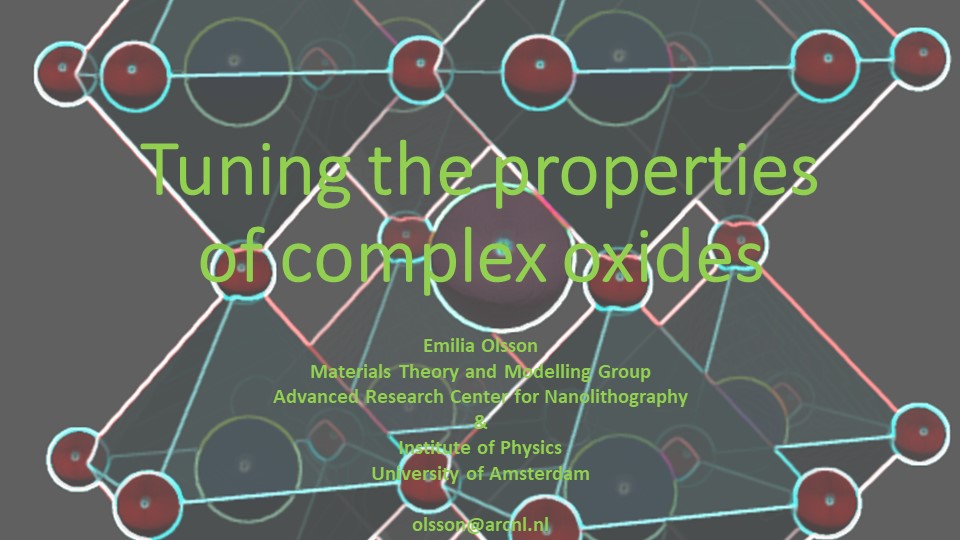
IUPAC|Chains 2023
The Materials Theory and Modelling group gave two contributions to the IUPAC|Chains conference in the Hague at the end of August. PhD student Johanna Nemec presented a poster on how to apply machine learning to amorphous materials, and group leader Emilia Olsson gave an invited talk on Tuning the properties of complex oxides – from bulk to interface.
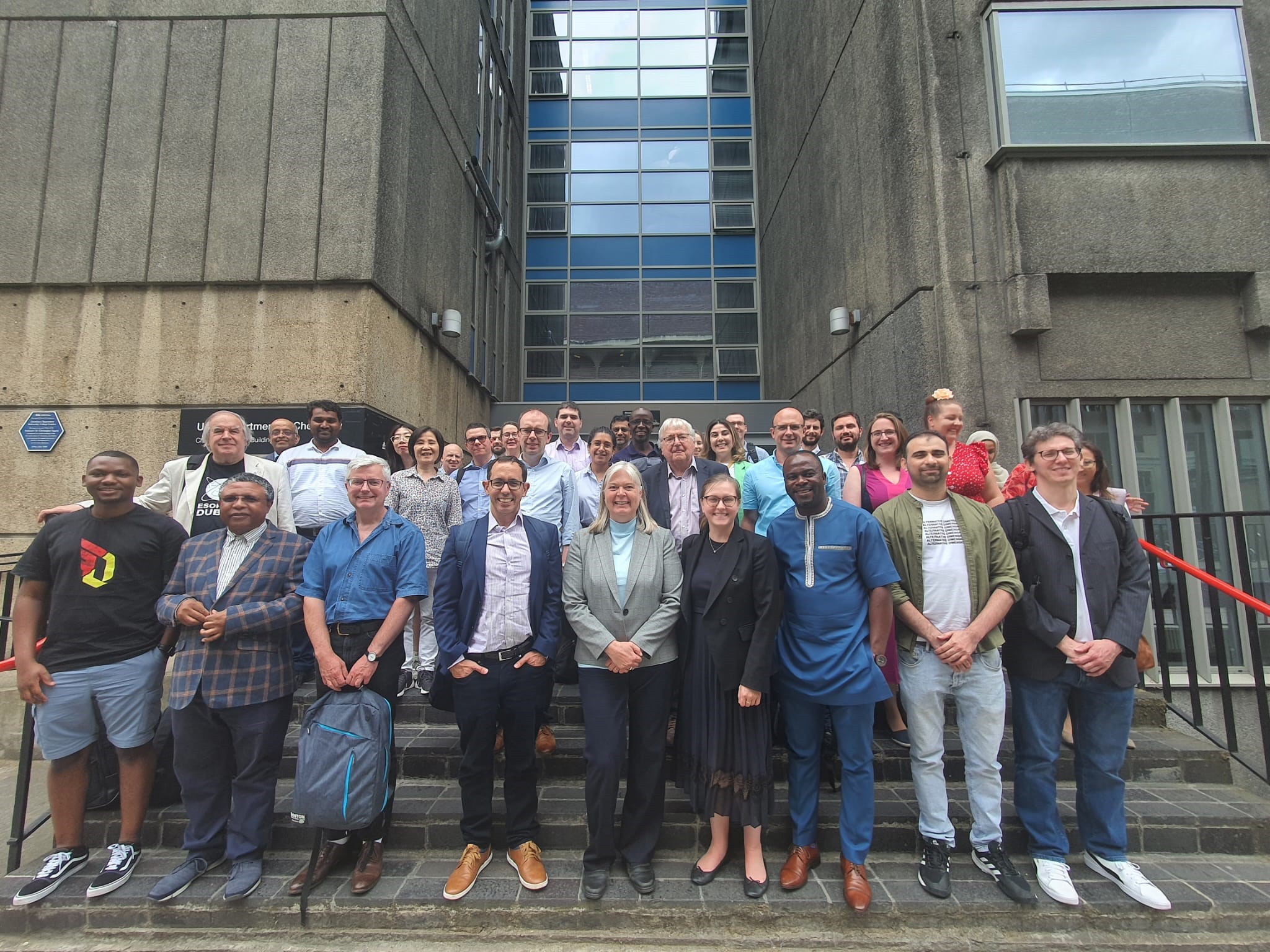
From Minerals to Materials: Experimental and Computational Chemistry Approaches
Emilia Olsson gave an invited talk at University College London on the 27th June 2023 at the From Minerals2Materials conference on “Materials Design – from fuel cells to semiconductors”.

Two poster presentations at NWO Physics
NWO Physics is the largest physics conference in the Netherlands and was organised 3-5 April 2023. Materials Theory and Modeling PhD students Barsha Bhattacharjee and Johanna Nemec both presented posters of their PhD work in the Materials Physics session on the 4th April. Barsha presented a poster on tuning of mechanical properties of transition metal nitrides, and Johanna on the exploration of different atomic-scale modelling methods on silica structures.
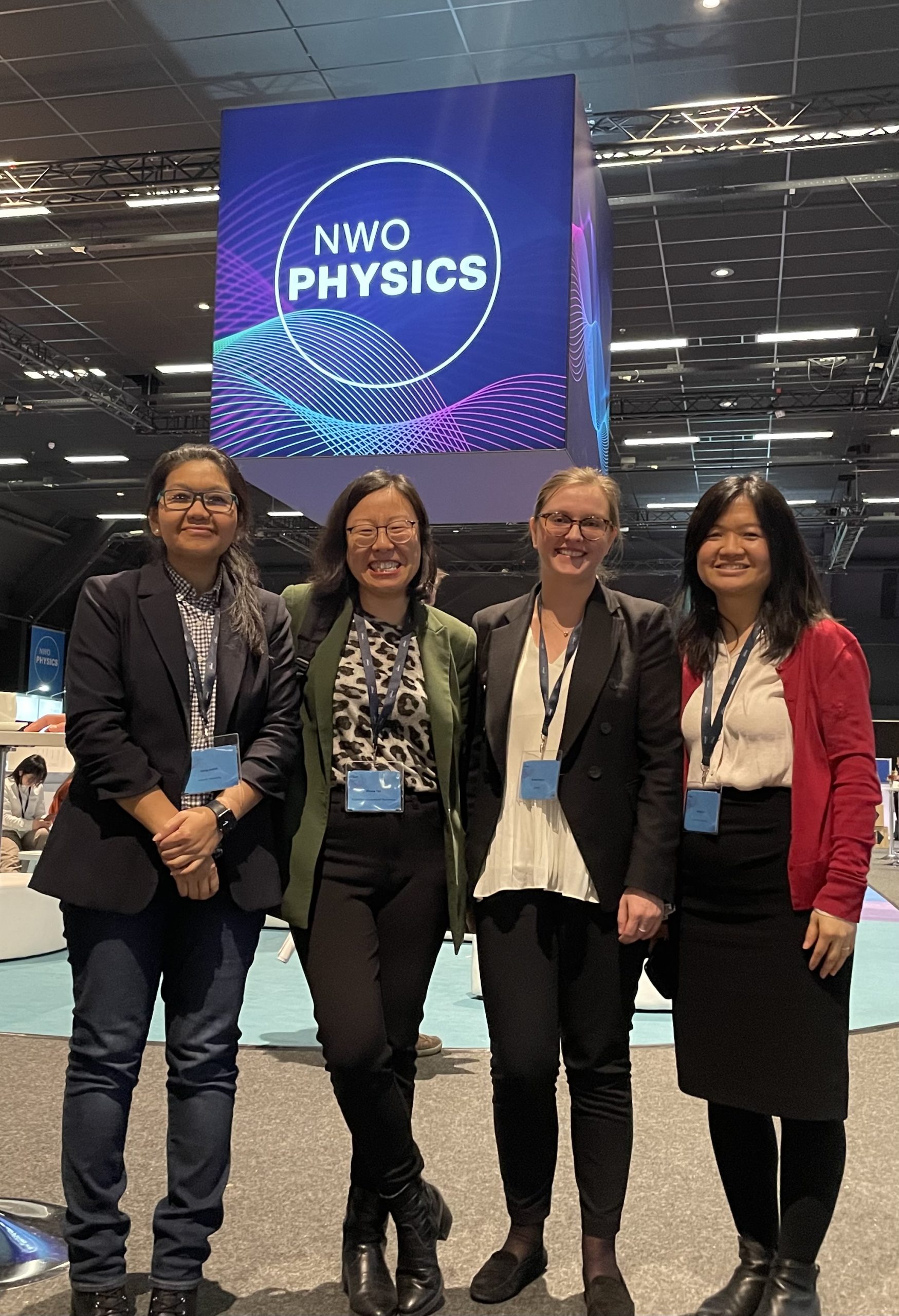
Computational Materials Design Focus Session
Emilia Olsson organised a focus session on Computational Materials Design at NWO Physics 2023 in Veldhoven. Computational materials design is a vital tool in materials physics research and is of ever growing importance. Combining state of the art computational materials modeling and characterization, with experimental testing and validation allows for new materials to be designed for specific applications. Directly probing and predicting the correlation between the atomic scale structure and a material’s properties gives us powerful tools with which to design next generation technologies, advancing our society. Computational materials design is typically an interplay between, physics, chemistry, biology, engineering, and materials science where the understanding of the underlying physical processes are becoming increasingly important to accurately predict and understand material properties and behavior. In this focus session, we brought together the Dutch computational materials modelling community focusing on density functional theory (DFT), molecular dynamics (MD), and multiscale modelling with talks on Taming the defects in halide perovskites: insights from multiscale simulations by Shuxia Tao from TU/e, In silico defect engineering to facilitate the design of functional materials by Jonathon Cottom from Leiden University, Modelling of Complex Energy Materials with Machine Learning by Nong Artrith from Utrecht University, and Multiscale materials design and modelling for electrochemical energy devices by Qiong Cai from the University of Surrey.

New publication in Small
By employing molecular dynamics simulations to study the effect of stress and strain on a complex oxide material, we could together with experimental collaborators at University of Surrey, United Kingdom, show how compressive stress can be used to limit dendrite formation in solid electrolytes. Our findings were published in Small (link), introducing a new engineering tool towards longer lifetime and higher safety devices.

New publication with Bliem group
Our first collaborative paper with the Materials and Surface Science for EUVL group is published in Applied Surface Science. “Identifying silicides via plasmon loss satellites in photoemission of the Ru-Si system” shows how plasmon loss peaks can be used to identify the formation of silicides in ruthenium, and can be found online here.







